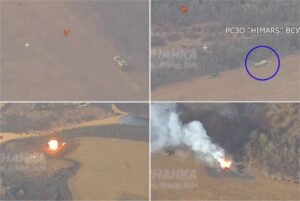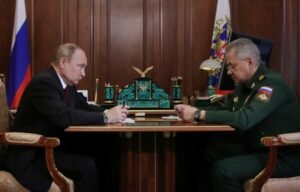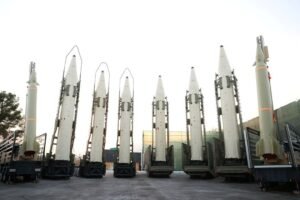
How long can Russia maintain its formidable weapons production capacity? 0
(Dan Tri) – Russia’s capacity to produce tanks, missiles and artillery shells has surprised the West and put more pressure on Ukraine, but the question is how long Moscow can continue like this.
President Putin last month visited the Uralvagonzavod tank factory, where he acknowledged the shortage of skilled labor (Photo: Getty).
For some Western officials and analysts, Russia’s military production figures have always been difficult to predict.
`Russia has had impressive success in increasing production in many defense areas. But I highly doubt that Russia can continue that pace,` said Oscar Jonsson, researcher at the Swedish National Defense University.
Russia’s weapons production capabilities have become increasingly important as the Ukraine conflict stretches into its third year and amid uncertainty about future U.S. military aid to Ukraine.
For example, the fact that Russia had more artillery shells was actually decisive in causing Ukraine to lose control of the eastern city of Avdiivka in February.
Meanwhile, Russia’s ability to rearm after the war could threaten other countries on its borders, these countries said.
After the outbreak of war in Ukraine, the US and its allies imposed a series of sanctions to make it difficult for Russia’s arms industry.
In response, Moscow quickly pumped resources into its arms industry.
Russia has also become more adept at avoiding sanctions, sourcing components such as microchips and Western telecommunications equipment that it cannot buy directly through other countries.
In December 2023, Defense Minister Sergei Shoigu said Russia is producing 17.5 times more ammunition, 17 times more unmanned aerial vehicles (UAVs) and 5.6 times more vehicles.
Western officials say Moscow has also increased production of missiles and other weapons.
According to a senior NATO official, Russia will likely maintain its war effort for another 2-5 years at its current scale.
Large investments in defense in Russia worry Western officials, saying NATO has underestimated Moscow’s ability to maintain long-term military campaigns.
The fact that Russia’s military production is increasing is clearly shown by economic data.
According to an analysis of Russian statistics from the Central Bank of Finland, output from several military-related industries, including optical products and fabricated metals, has doubled since then.
However, the bank concluded that increases in output and overall military spending may not be sustainable due to the loss of investment, human and material resources in many other sectors of the Russian economy.

Defense Minister Sergei Shoigu is said to have appeared at a weapons storage facility (Photo: ZUMA).
Some analysts have questioned Russia’s arms output.
Based on a review of satellite images before and after the outbreak of war, Michael Gjerstad, an expert at the International Institute for Strategic Studies, said that in 2023, Russia brought out at least 1,200 old tanks.
For example, up to 200 tanks were located at the same time outside the Omsktransmash tank factory in Omsk, Siberia as of late 2022, according to satellite images provided by Planet Labs PBC.
According to Nicholas Drummond, a defense consultant, these tanks look similar to the T-62, which has not been produced since the 1970s, and the T-54/55, which was first designed after World War II.
Moscow has also increased its stockpile of old artillery shells.
Russia has also not commented on the output and quality of its weapons.
Russian arms manufacturers face the challenge of sourcing skilled labor.
During a February visit to Russia’s largest tank factory, President Vladimir Putin told a worker that he was aware of a shortage of skilled manpower in the sector.
Previously, in June 2022, Deputy Prime Minister Yury Borisov said the arms industry was lacking about 400,000 people.






